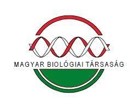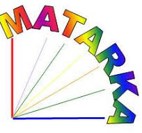Fogyatkozó haragossiklók – növekvő civil aktivitás a Magyar Madártani és Természetvédelmi Egyesület Kétéltű- és Hüllővédelmi Szakosztályában
Absztrakt
Az MME Kétéltű- és Hüllővédelmi Szakosztálya 2011-ben programot indított a haragossikló (Dolichophis caspius) megmaradt Budapest környéki élőhelyeinek feltérképezése, az állományok felmérése és a szükséges természetvédelmi kezelés megindítása céljából. Márciustól szeptember végéig összesen 10 alkalommal 4 élőhelyet jártunk be. Egyikük két, összesen 1–1,5 ha-os élőhelyfoltján 11 (7 adult, 2 szubadult, 2 juvenilis) haragossiklót láttunk, ötöt megfogtunk, majd adatfelvétel után szabadon engedtünk. Hat egyed biztosan különbözőként volt azonosítható. Mindkét folton nagy számban fordultak elő fali és zöld gyíkok, megfelelő táplálékbázist jelentve a haragossiklók számára. Az élőhelyeket a cserjésedés, az idegenhonos növények és a rekreációs tevékenységek veszélyeztetik. Egy körülbelül 0,5 hektáros élőhelyfolton a Szakosztály önkénteseinek bevonásával eltávolítottuk a fekete fenyőt. További célunk újabb élőhelyek feltérképezése, és szükség esetén, kezelésük előkészítése. A program együtt más programokkal növekvő civil aktivitást és önkéntes munkát generált.
Hivatkozások
Amo, L., López, P. & José, M. (2007): Habitat deterioration affects antipredatory behaviour, body condition, and parasite load of female Psammodromus algirus lizards. – Canadian Journal of Zoology 85: 743–751.
Arnold, N. & Ovenden, D. (2002): Collins Field Guide – Reptiles and Amphibians of Britain and Europe. Harpercollins Publishers, London.
Bellaagh, M., Báldi, A. & Korsós, Z. (2007): Élőhely-preferencia vizsgálatok a magyarországi haragossikló-állományokon. – Természetvédelmi Közlemények 13: 431–438.
Bellaagh, M., Korsós, Z. & Szelényi, G. (2008): New occurrences of the Caspian Whipsnake Dolichophis caspius (Reptilia: Serpentes: Colubridae) along the River Danube in Hungary – Acta Zoologica Bulgarica 60: 213–217.
Bonnaud, E., Bourgeois, K., Vidal, E., Kayser, Y., Tranchant, Y. & Legrand, J. (2007): Feeding ecology of a feral cat population on a small Mediterranean island. – Journal of Mammology 88: 1074–1081.
Boyle, S. A. & Samson, F. B. (1985): Effects of nonconsumptive recreation on wildlife: a review. – Wildlife Society Bulletin 13:110–116.
Burger, J. (2001): The behavioral response of basking Northern water (Nerodia sipedon) and Eastern garter (Thamnophis sirtalis) snakes to pedestrians in a New Jersey park. – Urban Ecosystems 5: 119–129.
Copping, J. (2008): Reptiles now more popular pets than dogs. – The Telegraph 2008. november 22., Online, [2012. január 5.].
Dely, O. Gy. (1978): Hüllők-Reptilia. – In: Magyarország Állatvilága (Fauna Hungariae). XX, 4, Akadémiai Kiadó, Budapest, 120 pp.
Dely, O. Gy. (1997): A csíkos vagy ugró sikló (Coluber caspius Gmelin, 1789) magyarországi előfordulásáról. – Állattani Közlemények 82: 39–46.
Dobolyi, K. (2002): Studies of vegetation dynamics on the rock grasslands in the Csíki-hegyek (Budaörs, Hungary). – Studia Botanica Hungarica 33: 83–96.
Gál, J. (ed) (2006): Hüllők tartása, takarmányozása és egészségvédelme. Bollók és tsa., Budapest, 302 p.
Gompper, M. E. & Vanak, A. T. (2008): Subsidized predators, landscapes of fear and disarticulated carnivore communities. – Animal Conservation 11: 13–14.
Herczeg, G., Krecsák, L. & Marsi, Z. (2002): Új bizonyító adat a haragos sikló előfordulásáról Budapest belterületén a Sas-hegyről. – Folia Historico-Naturalia Musei Matrensis 26: 341–344.
Korsós, Z., Mara, Gy. & Traser, Gy. (2002): A haragos sikló (Coluber caspius Gmelin, 1789) újabb előfordulása Magyarországon. – Folia Historico-Naturalia Musei Matrensis 26: 335–339.
Korsós, Z. (2007): A magyarországi hüllőfauna története a jégkorszak után. – In: Forró, L. (szerk.): A Kárpát-medence állatvilágának kialakulása. Magyar Természettudományi Múzeum. Budapest, pp. 283–296.
Kreiner, G. (2007): The snakes of Europe. Edition Chimaira, Frankfurt am Main, 317 pp.
Luiselli, L. & Akani, G. C. (2002): An investigation into the composition, complexity and functioning of snake communities in the mangroves of south-eastern Nigeria. – African Journal of Ecology 40: 220–227.
Medina, F. M., Bonnaud, E., Vidal, E., Tershy, B. R., Zavaleta, E. S., Donlan, C. J., Keitt, B. S., Corre, M. L., Horwath, S. V. & Nogales, M. (2011): A global review of the impacts of invasive cats on island endangered vertebrates. – Global Change Biology 17: 3503–3510.
Miles, I., Sullivan, W. C., & Kuo, F. E. (1998): Ecological restoration volunteers: the benefits of participation. – Urban Ecosystems 2: 27–41
Mushinsky, H. R. & Miller, D. E. (1993): Predation on water snakes: intraspecific and ontogenetic considerations. – Copeia 1993(3): 660–665.
Nagy, Z. T., Bellaagh, M., Wink, M., Paunović A. & Korsós, Z. (2010): Phylogeography of the Caspian whipsnake in Europe with emphasis on the westernmost populations. – Amphibia-Reptilia 31: 455–461.
Oscarson, D. B. & Calhoun, A. J. K. (2007): Developing vernal pool conservation plans at the local level using citizen-scientists. – Wetlands 27: 80–95.
Parent, C. & Weatherhead, P. J. (2000): Behavioral and life history responses of eastern massasauga rattlesnakes (Sistrurus catenatus catenatus) to human disturbance. – Oecologia 125: 170–178.
Pérez-Tris, J., Díaz, J. A. & Tellería, J. L. (2004): Loss of body mass under predation risk: cost of antipredatory behaviour or adaptive fit-for-escape? – Animal Behaviour 67: 511–521.
Rodda, G. H. & Tyrrell, C. L. (2008): Introduced species that invade and species that thrive in town: are these two groups cut from the same cloth? – In: Mitchell, J. C., Jung Brown, R. E. & Bartholomew, B. (szerk.): Urban Herpetology, Herpetological Conservation vol. 3., Society for the Study of Amphibians and Reptiles, Salt Lake City, UT, pp. 327–341.
Simberloff, D. (1998): Flagships, umbrellas, and keystones: is single-species management passé in the landscape era? – Biological Conservation 83: 247–257.
Tóth, T. (2002): Data on the North Hungarian records of the Large Whip Snake Coluber caspius Gmelin, 1789. – Herpetozoa 14: 163-167.
Újváry, B. Korsós, Z. & Kisbenedek, T. (1998): A tűz mint veszélyeztető tényező a rákosréti vipera élőhelyén. – Természetvédelmi Közlemények 7: 151–165.
Zinner, H. (1972): Systematics and Evolution of the Species Group Coluber jugularis Linnaeus, 1758 – Coluber caspius Gmelin, 1789 (Reptilia, Serpentes). PhD. Thesis, the Hebrew University of Jerusalem, Jerusalem, Israel (electronic version).






